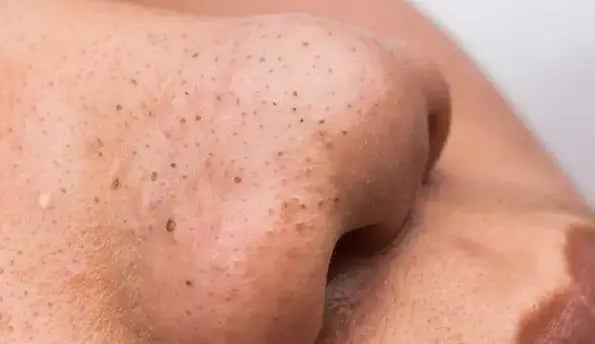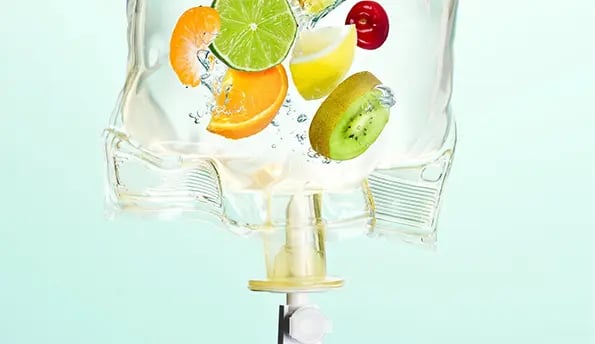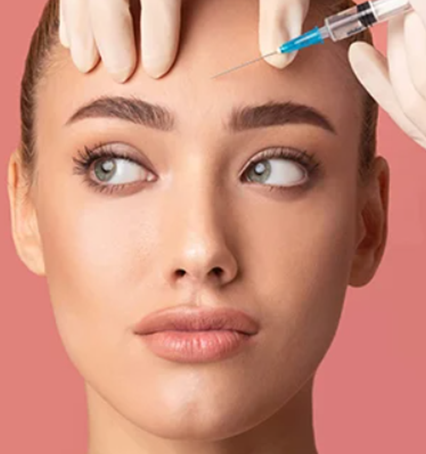What are Blackheads?
Understanding Blackheads

What Do Blackheads Look Like?
Blackheads have a distinctive appearance. They are small, slightly raised bumps on the skin's surface.
Despite their name, blackheads are not actually filled with dirt. The dark color is due to the oxidation of melanin, the skin's pigment, when it comes into contact with air. The trapped sebum (oily substance) and dead skin cells within the pore are exposed to air, leading to this darkening effect.
Blackheads have an open pore, which differentiates them from whiteheads. They have a wider opening, making the dark clog visible on the surface.
When you touch a blackhead, it may feel slightly rough or bumpy.
Blackheads occur when excess oil (sebum) produced by the skin, along with dead skin cells, accumulate and block the hair follicles or pores. This creates a favorable environment for bacteria, leading to inflammation and the formation of acne.
It is essential to avoid squeezing or picking at blackheads, as this can lead to further inflammation, infection, and scarring. Proper skincare, including regular cleansing and exfoliation, can help prevent and treat blackheads. If blackheads persist or are a significant concern, it's best to consult a dermatologist for professional advice and treatment options.
Our mission is to create a world where every investment in modern beauty is Worth It.
Let's keep in touch
Get updates of the treatments you are interested
What Causes Blackheads?

What are Symptoms of Blackheads?
Black or dark-colored bumps: These bumps are usually small, and they look dark due to the oxidation of melanin (skin pigment) when the comedo is exposed to air.
Occurrence on the skin surface: Blackheads are commonly found on the face, particularly on the nose, chin, and forehead. However, they can also appear on the back, chest, neck, and shoulders.
Texture: Blackheads have a different texture than other types of acne. They feel like tiny, slightly raised bumps on the skin.
No inflammation: Unlike pimples or pustules, blackheads are non-inflammatory. They don't usually cause redness, swelling, or pain unless they become infected or inflamed.
Easy extraction: Blackheads are relatively easy to extract, but it's important to do it properly to avoid skin irritation or infection.
It's essential to take care of your skin to prevent the formation of blackheads. Proper cleansing, exfoliation, and avoiding the use of comedogenic (pore-clogging) products can help reduce their occurrence. If blackheads persist or become a recurring issue, it's best to consult with a dermatologist for appropriate treatment and skincare advice.
How are Blackheads Treated?
To treat blackheads effectively and prevent their recurrence, a combination of proper skincare and lifestyle habits is essential.
Cleansing:
Use a gentle cleanser twice a day to remove excess oil and impurities from the skin. Avoid harsh scrubs or cleansers that can irritate the skin, as this may worsen the condition.
Exfoliation:
Regular exfoliation helps remove dead skin cells and prevent the formation of blackheads. However, be cautious not to over-exfoliate, as this can lead to skin irritation.
Topical Treatments:
Over-the-counter products containing ingredients like salicylic acid, benzoyl peroxide, or retinoids can be effective in treating blackheads. These substances help to unclog pores and regulate oil production.
Professional Extraction:
Dermatologists or trained skincare professionals can safely perform manual extraction of blackheads using specialized tools. Attempting to squeeze or pick at blackheads at home can lead to skin damage and infection.
Chemical Peels:
Chemical peels containing alpha hydroxy acids (AHAs) or beta hydroxy acids (BHAs) can help to exfoliate the skin and reduce blackheads.
Prescription Medications:
For more severe cases, a dermatologist may prescribe topical or oral medications to control acne and prevent blackhead formation.
Our mission is to create a world where every investment in modern beauty is Worth It.
Let's keep in touch
Get updates of the treatments you are interested
How Can Blackheads Be Prevented?
Keep Skin Clean:
Maintain a regular skincare routine that includes gentle cleansing twice a day to remove dirt, oil, and makeup.
Avoid Comedogenic Products:
Use non-comedogenic or oil-free skincare and makeup products that do not clog pores.
Exfoliate Regularly:
Exfoliate the skin 1-2 times a week to prevent the buildup of dead skin cells.
Avoid Touching Your Face:
Touching your face can transfer bacteria and oil to the skin, potentially causing blackheads. Try to refrain from touching your face unnecessarily.
Stay Hydrated:
Drinking plenty of water helps keep the skin hydrated and healthy.
Balanced Diet:
A balanced diet with plenty of fruits and vegetables can promote healthy skin.
Sun Protection:
Use sunscreen daily to protect your skin from UV damage, which can worsen acne and lead to blackheads.
Avoid Heavy Cosmetics:
Heavy makeup can block pores, so consider using lightweight or mineral-based makeup.
Understanding Blackheads
What Do Blackheads Look Like?
Blackheads have a distinctive appearance. They are small, slightly raised bumps on the skin's surface.
Despite their name, blackheads are not actually filled with dirt. The dark color is due to the oxidation of melanin, the skin's pigment, when it comes into contact with air. The trapped sebum (oily substance) and dead skin cells within the pore are exposed to air, leading to this darkening effect.
Blackheads have an open pore, which differentiates them from whiteheads. They have a wider opening, making the dark clog visible on the surface.
When you touch a blackhead, it may feel slightly rough or bumpy.
Blackheads occur when excess oil (sebum) produced by the skin, along with dead skin cells, accumulate and block the hair follicles or pores. This creates a favorable environment for bacteria, leading to inflammation and the formation of acne.
It is essential to avoid squeezing or picking at blackheads, as this can lead to further inflammation, infection, and scarring. Proper skincare, including regular cleansing and exfoliation, can help prevent and treat blackheads. If blackheads persist or are a significant concern, it's best to consult a dermatologist for professional advice and treatment options.
Our mission is to create a world where every investment in modern beauty is Worth It.
Let's keep in touch
Get updates of the treatments you are interested
What Causes Blackheads?

What are Symptoms of Blackheads?
Black or dark-colored bumps: These bumps are usually small, and they look dark due to the oxidation of melanin (skin pigment) when the comedo is exposed to air.
Occurrence on the skin surface: Blackheads are commonly found on the face, particularly on the nose, chin, and forehead. However, they can also appear on the back, chest, neck, and shoulders.
Texture: Blackheads have a different texture than other types of acne. They feel like tiny, slightly raised bumps on the skin.
No inflammation: Unlike pimples or pustules, blackheads are non-inflammatory. They don't usually cause redness, swelling, or pain unless they become infected or inflamed.
Easy extraction: Blackheads are relatively easy to extract, but it's important to do it properly to avoid skin irritation or infection.
It's essential to take care of your skin to prevent the formation of blackheads. Proper cleansing, exfoliation, and avoiding the use of comedogenic (pore-clogging) products can help reduce their occurrence. If blackheads persist or become a recurring issue, it's best to consult with a dermatologist for appropriate treatment and skincare advice.
How are Blackheads Treated?
To treat blackheads effectively and prevent their recurrence, a combination of proper skincare and lifestyle habits is essential.
Cleansing:
Use a gentle cleanser twice a day to remove excess oil and impurities from the skin. Avoid harsh scrubs or cleansers that can irritate the skin, as this may worsen the condition.
Exfoliation:
Regular exfoliation helps remove dead skin cells and prevent the formation of blackheads. However, be cautious not to over-exfoliate, as this can lead to skin irritation.
Topical Treatments:
Over-the-counter products containing ingredients like salicylic acid, benzoyl peroxide, or retinoids can be effective in treating blackheads. These substances help to unclog pores and regulate oil production.
Professional Extraction:
Dermatologists or trained skincare professionals can safely perform manual extraction of blackheads using specialized tools. Attempting to squeeze or pick at blackheads at home can lead to skin damage and infection.
Chemical Peels:
Chemical peels containing alpha hydroxy acids (AHAs) or beta hydroxy acids (BHAs) can help to exfoliate the skin and reduce blackheads.
Prescription Medications:
For more severe cases, a dermatologist may prescribe topical or oral medications to control acne and prevent blackhead formation.
Our mission is to create a world where every investment in modern beauty is Worth It.
Let's keep in touch
Get updates of the treatments you are interested
How Can Blackheads Be Prevented?
Keep Skin Clean:
Maintain a regular skincare routine that includes gentle cleansing twice a day to remove dirt, oil, and makeup.
Avoid Comedogenic Products:
Use non-comedogenic or oil-free skincare and makeup products that do not clog pores.
Exfoliate Regularly:
Exfoliate the skin 1-2 times a week to prevent the buildup of dead skin cells.
Avoid Touching Your Face:
Touching your face can transfer bacteria and oil to the skin, potentially causing blackheads. Try to refrain from touching your face unnecessarily.
Stay Hydrated:
Drinking plenty of water helps keep the skin hydrated and healthy.
Balanced Diet:
A balanced diet with plenty of fruits and vegetables can promote healthy skin.
Sun Protection:
Use sunscreen daily to protect your skin from UV damage, which can worsen acne and lead to blackheads.
Avoid Heavy Cosmetics:
Heavy makeup can block pores, so consider using lightweight or mineral-based makeup.









